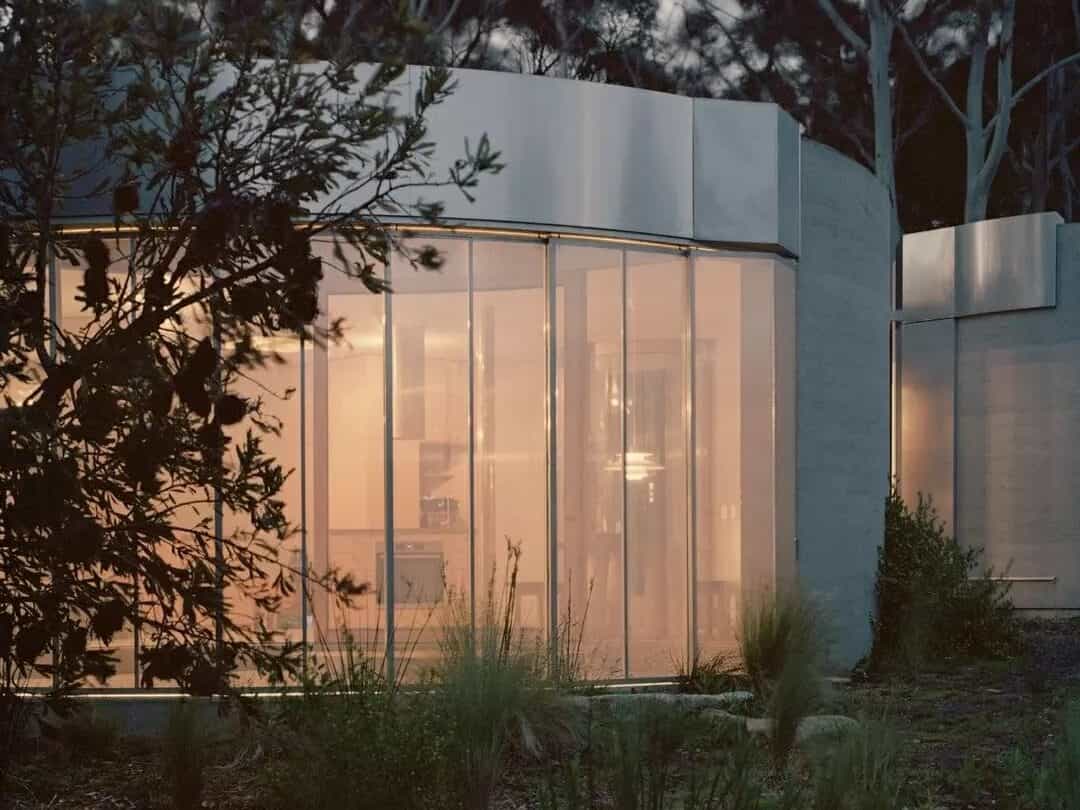Yanakie House by Richard Stampton Architects and photographed by Rory Gardiner is a unique Victorian residence that intricately interacts with its bushland setting, redefining the boundaries of architectural design. This home invites contemplation on how architecture can coexist with and even enhance its natural environment.

Contextual Inspiration
Australian bushland is a captivating and diverse environment, challenging architects to create structures that harmonize with their surroundings. Historically, architects like Glenn Murcutt and Richard Leplastrier embraced a modest, rural vernacular, producing designs that seamlessly blended into the landscape. Over time, their methods became the standard approach, leading to repetitive and uninspired imitations.

Richard Stampton’s Yanakie House diverges from these conventional paradigms. Instead, it offers a fresh perspective on how to build within the Australian bushland. The house, composed of rammed-earth and concrete cylinders, varies in height, diameter, and placement, creating a cluster of structures rather than a singular building. This innovative design challenges traditional notions of what a house should be.

Immersive Experience
Moving through Yanakie House is a sensory journey. The dispersed layout of the cylinders means residents are continually exposed to the elements, experiencing the sounds of wildlife, the scent of eucalyptus, and the changing weather. This connection to nature profoundly influences daily life, bringing the outside world into the home.

Each cylinder serves a specific purpose: bedrooms, a bathroom, a kitchen, dining and living spaces, a storeroom, and water tanks. This separation of functions requires residents to traverse the bushland, enhancing their interaction with the environment. The absence of clear boundaries between the house and the landscape blurs the line between indoors and outdoors, creating a seamless integration with the surroundings.

Architectural Innovation
Yanakie House redefines architectural norms with its lack of a defined front, back, or directional orientation. This departure from traditional design aligns with the formlessness of the bushland, where there is no inherent sense of direction. The circular forms of the cylinders further emphasize this concept, avoiding any disruption to the natural flow of the landscape.
Externally, the structures resemble storage tanks or infrastructural outbuildings rather than a typical house. This ambiguity challenges preconceived notions of domestic architecture and aligns the buildings more closely with the ecological timescales of their environment. The monolithic appearance and scattered arrangement evoke images of ancient ruins, suggesting a timeless connection with the land.

Contrasts and Connections
The design of Yanakie House creates a complex interplay between connection and seclusion. While the rooms establish strong links to the bushland, there is also a clear division between interior and exterior. Narrow vertical slits in the massive earthen walls allow selective views of the outside, emphasizing privacy and protection. Metal screens over the cylinders enhance this sense of security, creating a sanctuary within the wild.
This careful balance reflects the nuanced challenge of building in the bushland. It acknowledges the inevitable disruptions and destruction caused by construction while striving to maintain a respectful and harmonious relationship with the natural environment. Yanakie House demonstrates that architecture can address these dualities, celebrating the beauty and complexity of the bushland while providing a comfortable and secure home.

Yanakie House by Richard Stampton Architects is a remarkable example of how architecture can engage with its natural context in innovative and meaningful ways. By challenging conventional design paradigms and embracing the complexities of the bushland, this residence offers a fresh perspective on how we can find home in the landscape. It stands as a testament to the potential for architecture to create profound connections with the environment while respecting its inherent challenges and beauty.




